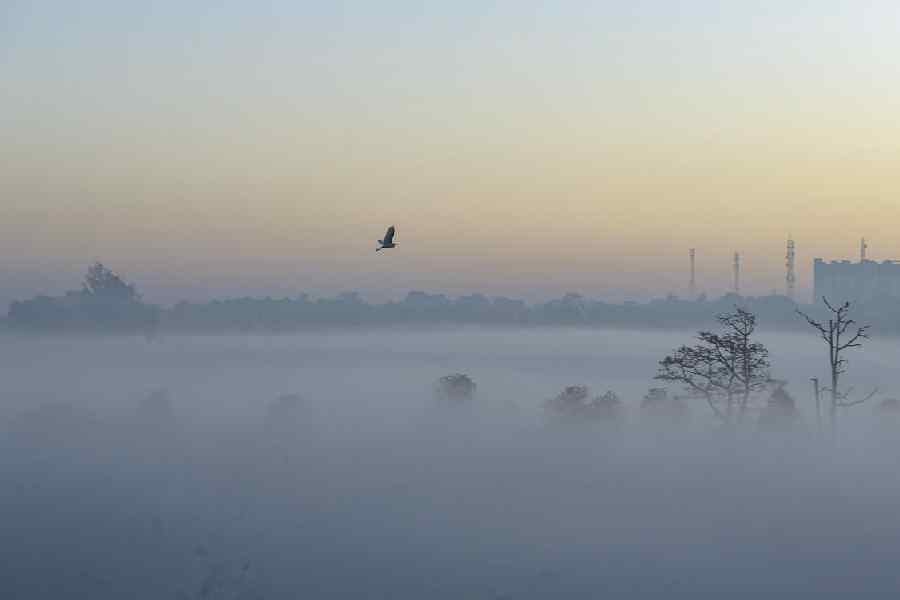Bihar conducted its first ever ‘water bird census’ and found 202 species of birds — domestic and migratory — inhabiting the wetlands across the state.
The sizable number and variety of water birds has gladdened the hearts of experts but they have also expressed serious concern over the deteriorating condition of the wetlands in the state, which may become unsustainable for the birds that make their abode in and around them.
Altogether 335 experts, including 13 coordinators, scoured the wetlands from February 16 to 20 this year to conduct the census — identifying, documenting, and photographing the birds.
London-based organisation Birdlife International monitored the entire exercise. The data and reports were compiled over the last couple of months and are now ready for dissemination.
“The teams led by the experts surveyed 68 wetlands that conformed to the standards of Wetlands International, a global organisation working for the conservation of wetlands.
“They documented 202 species of water birds. The total number of birds enumerated among these species during the census was 45,173,” Bihar additional principal chief conservator of forests (wildlife) Prabhat Kumar Gupta told The Telegraph.
Wetlands are a distinct ecosystem where water covers the soil or is present near the surface of the ground either permanently or seasonally or periodically throughout the year. The presence of water determines the flora and fauna in and around the area.
Bihar has 133 big and over 17,000 small wetlands that lend to its rich biodiversity and are home to varieties of plants, birds, animals and insects.
Gupta added that major wetlands like the Gogabil Lake and bird conservation reserve in Katihar, Vikramshila wetlands in Bhagalpur, Indrapuri Barrage in Rohtas, Nagi-Nakti bird sanctuary in Jamui and Odhni Dam in Banka were included in the census.
The 202 bird species found in the wetlands include 80 living on water, 21 water-dependent ones, and 101 living close to the wetlands.
“We did not have authentic data of water birds in Bihar because such a census was never conducted here. Some other states like Karnataka, Andhra Pradesh and Odisha had it. We now have baseline data, which will be used to know about the trend of the arrival of birds here and the suitability of the place for them. We could use such figures for better management of the wetlands,” Gupta said.
Bombay Natural History Society (BNHS) and Indian Bird Conservation Network (IBCN) member and an expert on birds, Navin Kumar, who was a part of the water bird census said he was awestruck by the varieties of migratory birds in Bihar wetlands.
“We noticed migratory birds like Northern Pintail, Gadwall, Northern Shoveler, Garganey, Common Teal, Falcated duck, Red-crested Pochard, Eurasian Weasel, Eurasian Marsh Harrier, Osprey, Peregrine Falcon and many others in the wetlands. They come from North America, Europe and Northern parts of Asia,” Kumar said.
“Falcated duck’s sightings in India are very rare. It comes from the Siberian region that too in one or two numbers. Similarly Peregrine Falcon from North America is considered the king of all falcons. It can swoop at a speed of 300km per hour. These were the Kosi river areas in Supaul district close to the Indo-Nepal border,” he added.
However, Kumar expressed worry over the condition of wetlands in the state and said that mounds were developing in many of them. These tend to grow and lead to a slow death of the wetland.
“We noticed massive human intervention, reclamation of land, garbage being dumped, drains emptying in the wetlands. Hunting, poaching and netting of birds is also very common. These activities must be stopped to save the wetlands and birds,” he said.
On the deteriorating condition of the wetlands, Gupta said that burgeoning population’s pressure and agriculture were damaging the wetlands.
“Pesticides used in farming leach into the wetlands, destroying aquatic life, affecting birds and dissuading them from coming. Encroachment and land reclamation are also major problems. We have to see how well we can manage these issues,” Gupta said.
Bihar has a state wetland authority since 2017 to look into these issues, but its working is still at a nascent stage.











